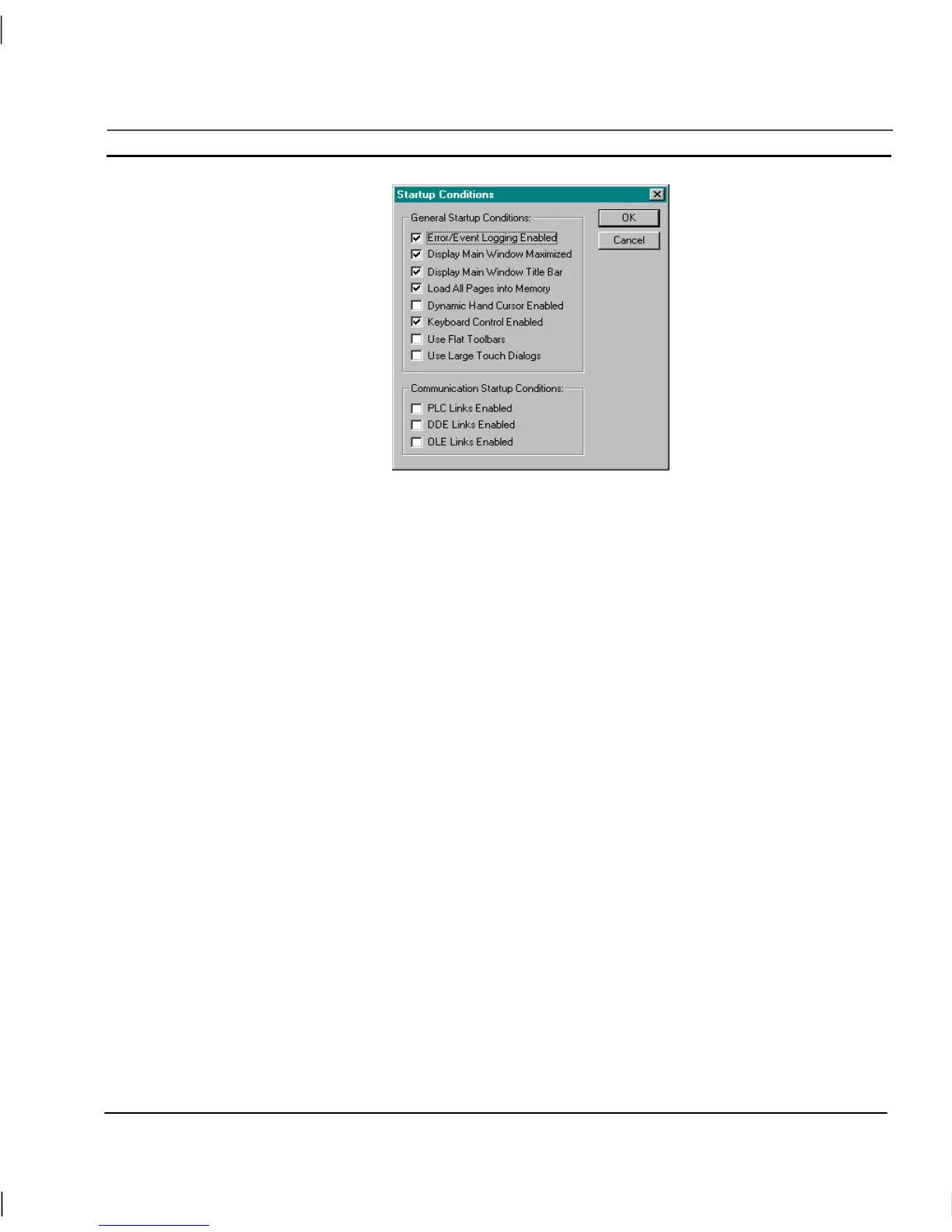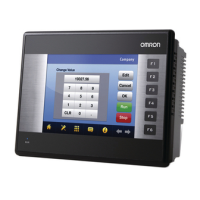OMRON CHAPTER 6 – Projects
Release 2.0 Page 87
Click the settings to enable/disable General Startup Conditions and Communication Startup
Conditions. Click the OK pushbutton to accept the settings or the Cancel pushbutton to abort.
When Keyboard Control is enabled, a focus rectangle becomes visible around the currently selected
object. The cursor keys and <Tab> key can then be used to navigate around the selectable objects on
a page. Once an object is selected certain actions can then be applied, depending on the object’s type.
The most common action is to simulate a left mouse button click.
The following list shows all the possible facilities with Keyboard Control enabled.
♦ Moving Around Selectable Objects Using Cursor Keys. The cursor keys can be used to move
around the objects in the respective direction.
♦ With an object selected, if the right cursor key is pressed, then the closest object is selected from
within an area bounded by lines drawn diagonally upwards and diagonally downwards (and to
the right) from the centre of the object. If no object is found then the current object remains
selected. A similar rule also applies when using the left cursor key, and the up and down cursor
keys.
Note: Selectable items must have a left mouse button event defined or have a default action.
♦ Moving Around Selectable Objects Using <Tab> Key. The <Tab> key can be used to move
around all the objects in the order in which they are drawn (this can be varied using the ‘raise
object’ and ‘lower object’ editing facilities). The <Shift>+<Tab> key can be used to move
around the objects in the reverse order.
♦ To select items in a specific tab order: use the <Tab> key to move around the page items in a
specific order, using the ‘move to top’ feature. Start at object number 1 and end with the last
object, i.e. if obj1, obj2 and obj3 then use ‘move to top’ on obj1 first, followed by obj2 and then
by obj3; this gives the tab order obj1, obj2, obj3.
♦ Changing Between Pages. The <Ctrl>+<Tab> key can be used to change between pages.

